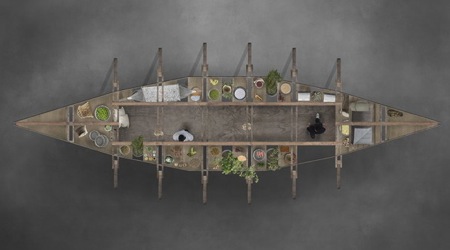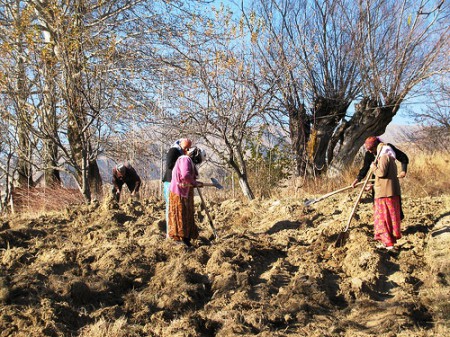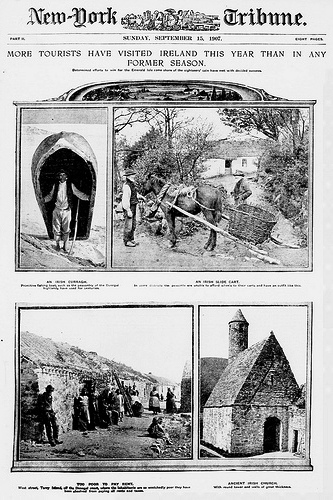The latest issue of the Prescott College alumni magazine Transitions is devoted to the question “Where does our food come from?” 1 Sure, Gary Nabhan is in there, busily retracing Vavilov’s footsteps. But also our friend and occasional contributor Colin Khoury. And much else besides. Oh, and since we’re talking about Vavilov, he collected in the Pamirs, didn’t he?
Seeds and architecture, Greek style
Two events don’t constitute a trend; that takes three. But I note with interest that Greece’s entry in the 12th International Architecture Exhibition in Venice is Ark. Old seeds for new cultures. Readers will remember that the UK Pavilion at the Shanghai Expo of 2010 featured a Seed Cathedral.

Greece’s effort is much more rooted in food than the UK’s. The Greek Ark Project helpfully explains:
The oldest meaning of the ancient greek word for the activity of building, ktisis, is “weeding, preparation of the soil for sowing, planting“, while the meanings of ‘foundation’ and ‘construction’ are subsequent. Sowing and Construction introduce at the outset a dual function for architecture as the activity of organizing both buildings in space and, also, of open, natural spaces. By means of the present project, we seek to reintroduce into contemporary architectural practices the spaces of culture in its double meaning, of agriculture and of civilization. “People meet within culture”.
It goes on to place the architecture squarely within the realm of agriculture.
And thanks to The History of Greek Food for the original post and the photograph.
Nibbles: School gardens, Food Policy, Beer
- Download a book on how to create an outdoor classroom school garden.
- Ars Technica reports on a How to feed 9 billion panel discussion.
- How Ancient Brits brewed beer.
Celebrating Irish agrobiodiversity, and other things
Nibbles: Yak, Flax, Diet, Naked chicks, Insectivory, Pastoralism conference, ICTs
- Know your yak breeds. h/t Brendan
- Neolithic linen.
- You are what your mother ate. Its all down to the Hnf4a gene.
- Naked chick necks? It’s all down to an interaction between the BM12 gene and retinoic acid receptors.
- Laos swallows the lets-eat-insects bait. Dutch follow suit?
- The future of pastoralism. It has one? Is this the alternative?
- Citizen science in national parks.

 Happy St Patrick’s Day! Now, do I link to
Happy St Patrick’s Day! Now, do I link to